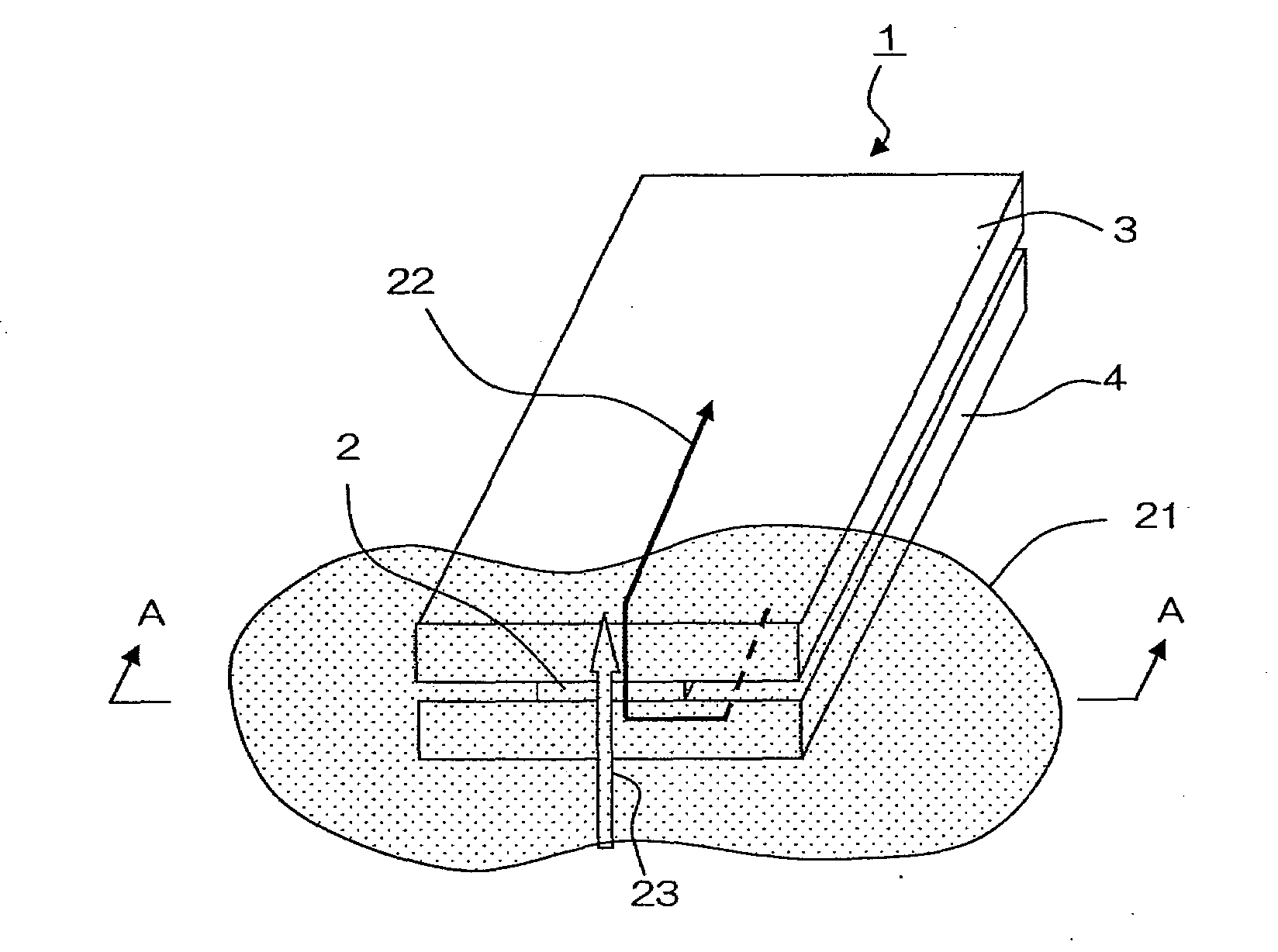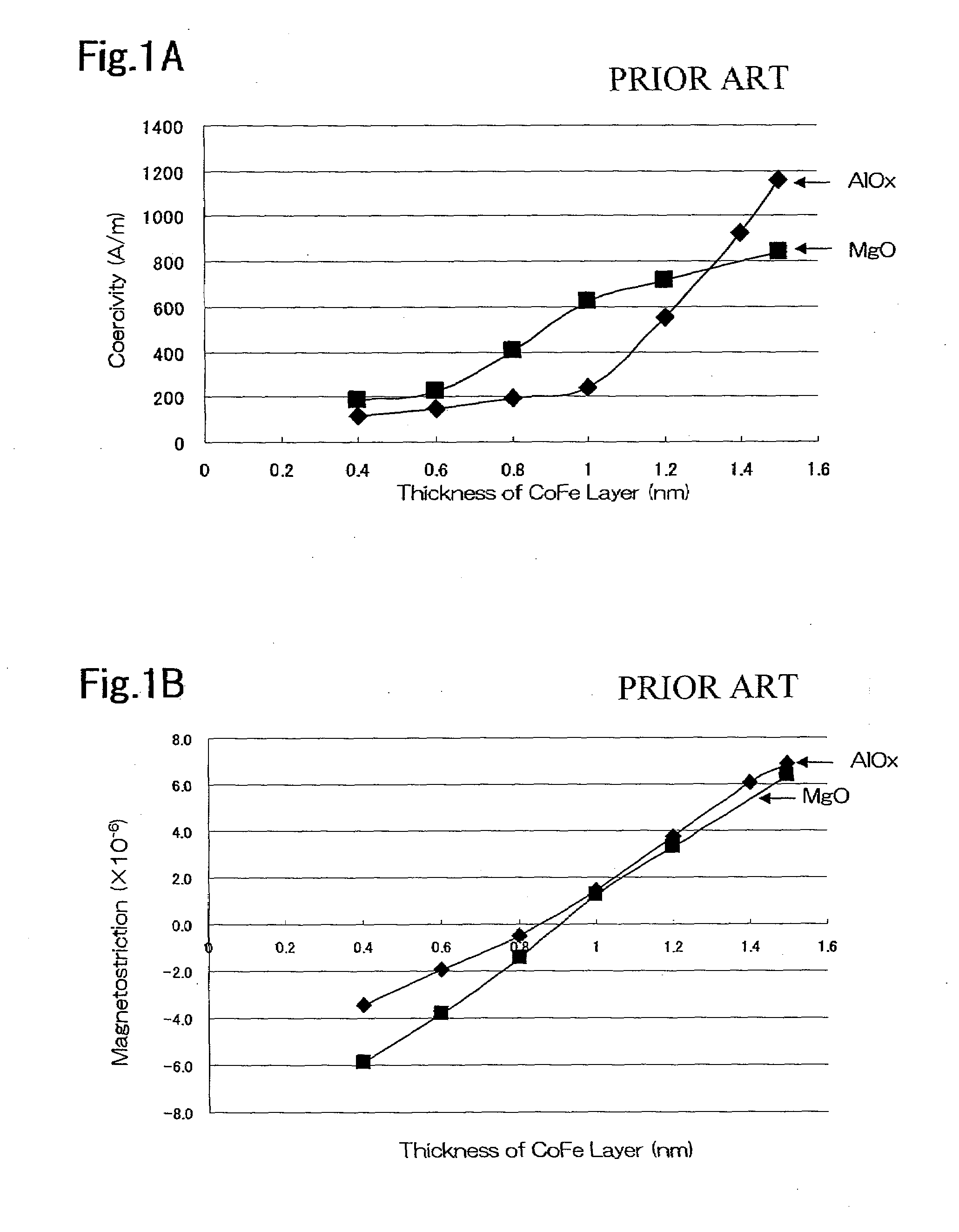Cpp-type magneto resistive effect element having a pair of magnetic layers
a magneto-resistive effect and layer technology, applied in the field of cpp, can solve the problems of large mismatch in lattice constant, difficult to obtain good film characteristics, disturbing crystalline structure, etc., and achieve the effect of high magnetoresistance ratio and soft magnetic characteristics
- Summary
- Abstract
- Description
- Claims
- Application Information
AI Technical Summary
Benefits of technology
Problems solved by technology
Method used
Image
Examples
1st embodiment
[0039]A magnetoresistance effect element according to the present embodiment is used as a magnetoresistance effect element in a CPP-GMR element. FIG. 2 is a partial perspective view of a thin-film magnetic head that includes magnetoresistance effect element 2 according to the present invention. Thin-film magnetic head 1 may be a read-only head or may be an MR / inductive composite head having a write head portion. Magnetoresistance effect element 2 is arranged between upper electrode shield 3 and lower electrode shield 4 and has a tip end that faces recording medium 21. Magnetoresistance effect element 2 is adapted to allow sense current 23 to flow in a direction that is perpendicular to the film plane under a voltage that is applied between upper electrode shield 3 and lower electrode shield 4. The magnetic field of recording medium 21 at a position that faces magnetoresistance effect element 2 changes in accordance with the movement of recording medium 21 in moving direction 23. Thi...
2nd embodiment
[0054]A second embodiment of the present invention will be described below. A magnetoresistance effect element according to the second embodiment is similar to the first embodiment except that the layer configuration Cu / ZnO / Cu of the spacer layer according to the first embodiment is changed to Cu / ZnO / Zn. Table 2 shows an example of the layer configuration of the stack according to the present embodiment. Similarly to the first embodiment, the present embodiment is used as a magnetoresistance effect element in a CPP-GMR element.
TABLE 2Layer ConfigurationCompositionThickness(nm)Cap Layer 10Ru10Free Layer 9NiFe5CoFeB0.5CoFe1Spacer Layer 8Zn0.7ZnO1.6Cu0.7Pinned Layer 7Inner Pinned Layer 73CoFe3Intermediate Layer 72Ru0.8Outer Pinned Layer 71CoFe3Antiferromagnetic Layer 6IrMn5Buffer Layer 5Ru2Ta1
[0055]FIGS. 5A through 5C show the comparison of coercivity, the magnetostriction and the magnetoresistance ratio between a layer configuration of Cu / ZnO / Cu and a layer configuration of Cu / ZnO / Zn....
3rd embodiment
[0058]A third embodiment of the present invention will be described below. A magnetoresistance effect element according to the third embodiment is similar to the first embodiment except that the layer configuration Cu / ZnO / Cu of the spacer layer according to the first embodiment is changed to MgO. Table 3 shows an example of the layer configuration of the stack according to the present embodiment. The present embodiment is used as a magnetoresistance effect element in a TMR element.
TABLE 3Layer ConfigurationCompositionThickness(nm)Cap Layer 10Ru10Free Layer 9NiFe4CoFeB0.4CoFe0.6Spacer Layer 8MgO1Pinned Layer 7Inner Pinned Layer 73CoFe1CoFeB1.8Intermediate Layer 72Ru0.8Outer Pinned Layer 71CoFe3Antiferromagnetic Layer 6IrMn7Buffer Layer 5Ru2Ta1
[0059]MgO has a crystalline structure, similarly to Cu / ZnO / Cu, and is more apt to affect the soft magnetic characteristics of the free layer than AlOx that has an amorphous structure that has been conventionally used. However, for the same reaso...
PUM
| Property | Measurement | Unit |
|---|---|---|
| thickness | aaaaa | aaaaa |
| thickness | aaaaa | aaaaa |
| coercivity | aaaaa | aaaaa |
Abstract
Description
Claims
Application Information
 Login to View More
Login to View More - R&D
- Intellectual Property
- Life Sciences
- Materials
- Tech Scout
- Unparalleled Data Quality
- Higher Quality Content
- 60% Fewer Hallucinations
Browse by: Latest US Patents, China's latest patents, Technical Efficacy Thesaurus, Application Domain, Technology Topic, Popular Technical Reports.
© 2025 PatSnap. All rights reserved.Legal|Privacy policy|Modern Slavery Act Transparency Statement|Sitemap|About US| Contact US: help@patsnap.com



